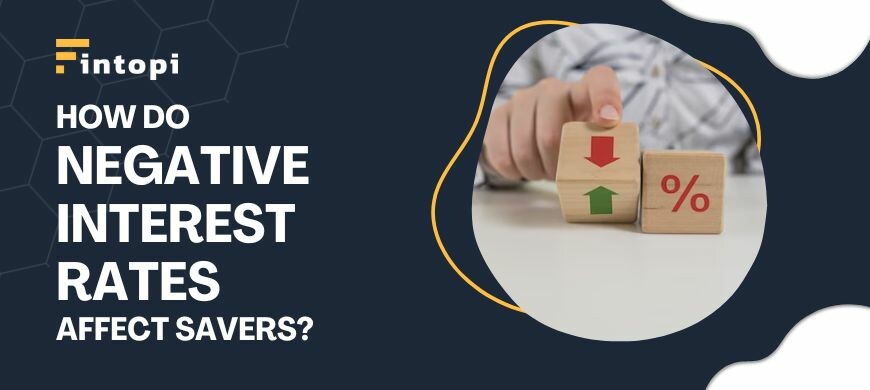Understanding Negative Interest Rates: How They Work and What You Need to Know
Negative interest rates have been a topic of discussion in the financial world for quite some time now. It is an unconventional monetary policy tool that has been used by central banks across the globe. In this article, we will explore what negative interest rates are and how they work.
We will navigate through how negative interest rates function, why they are used, what their impact on savers are, and the risks associated with them.
What are Negative Interest Rates? Explained for Beginners and Why it Matters to Know
Negative interest rates are a form of monetary policy that sees nominal target interest rates set with a negative value below 0%. This means that borrowers receive a credit instead of paying interest on their loans. On the other hand, savers or depositors pay to keep their money in banks rather than earning any returns on it.
In a negative interest rate environment, commercial banks are charged interest for holding excess reserves with the central bank, incentivizing them to lend money rather than hold onto it. This, in turn, can stimulate economic activity and promote inflation.
While negative interest rates may have some benefits, they also carry risks, such as the potential for financial instability and negative impacts on savers.
Real interest rates refer to nominal target interest rates adjusted for inflation. When real interest rates turn negative due to deflationary pressures or low inflation levels, it can lead to economic stagnation as people tend to hoard cash rather than spend or invest it. This leads to lower aggregate demand, which further worsens deflationary pressures.
Effects of Negative Interest Rates on Your Savings, Investments, and Loans
In a negative interest rate environment where storing cash incurs fees rather than earning interest, consumers and businesses may be incentivized to spend more. However, this could also mean higher borrowing costs, as lenders would want compensation for lending out funds at such low interest rates.
With interest rates at historic lows, banks have been forced to implement new strategies to remain profitable and competitive. One approach has been to shift their focus toward fee-based revenue streams, such as transaction fees and account maintenance fees, rather than relying solely on interest income.
Additionally, banks have sought to diversify their businesses by expanding into new areas, like wealth management and digital banking. Another strategy has been to increase their lending activities, particularly in areas such as mortgage lending and small business lending, where interest rates remain relatively higher.
While the low interest rate environment presents challenges for banks, it also presents opportunities for innovation and growth.
Breaking Down the Complexities of Negative Interest Rates
Negative interest rates are a monetary policy tool used by central banks to stimulate economic growth and prevent deflation. Central banks charge commercial banks on reserves in an effort to incentivize them into spending rather than hoarding cash positions during times when there are strong signs of deflation.
Although commercial banks are charged interest by keeping cash with the nation’s central bank, they generally avoid passing these charges onto customers, fearing loss-of-businesses. An expansionary monetary policy is usually employed during economic stagnation.
Therefore, it’s important to remember the following to comprehend negative interest rates:
Commercial banks
They are charged interest for holding excess reserves with the central bank, incentivizing them to lend money instead of holding onto it.
Increased availability
Negative interest rates may have benefits, such as increased availability of credit and reduced borrowing costs, but they also carry risks and unintended consequences. These consequences include the potential for financial instability and negative impacts on savers.
Low inflation
Negative interest rates are primarily caused by low inflation and weak economic growth, which can lead to deflationary pressures. Still, successful navigation of this environment may involve focusing on fee-based revenue streams, diversifying business models, and increasing lending activities.
Up-to-date
Negative interest rates are still a relatively new and experimental policy tool, and their long-term effects on the economy and financial markets are not yet fully understood.
Conclusion
All accounted for, negative interest rates are a tool that central banks can use to combat deflation and stimulate economic growth. But, they also come with risks and potential unintended consequences. While negative interest rates may impact savers and investors, they also present opportunities for those who are willing to take on additional risk.
As with any investment decision, it is crucial to understand the potential risks and rewards and to consult with a financial advisor before making any significant changes to your investment strategy. Negative interest rates are a complex and controversial topic, and it is important to stay informed and up-to-date on the latest developments in this area.
FAQs
Q: Do I get charged negatively if I hold my savings account?
A: In general, no, but particularly in countries where negative interest rates have been implemented, banks may pass on the costs of holding excess reserves to their customers, including those with savings accounts.
This means that there is a possibility that you may be charged a fee for keeping your savings in the bank, depending on the specific policies of your bank and the prevailing interest rate environment.
Q: Which countries currently employ NIRP?
A: Several countries, including Japan, Switzerland, Denmark, and Sweden, along with the ECB (European-Central-Bank).
Q: Is it time for investors to rethink their strategies
A: Whether investors need to rethink their strategies in light of negative interest rates depends on several factors, including their individual investment goals, risk tolerance, and prevailing economic conditions.
Negative interest rates can have a significant impact on various asset classes, such as bonds, and may lead investors to seek out higher returns in other asset classes, such as equities. As such, it may be a good time for investors to reassess their portfolios and consider diversifying their holdings to include a mix of asset classes that are less affected by negative interest rates.



